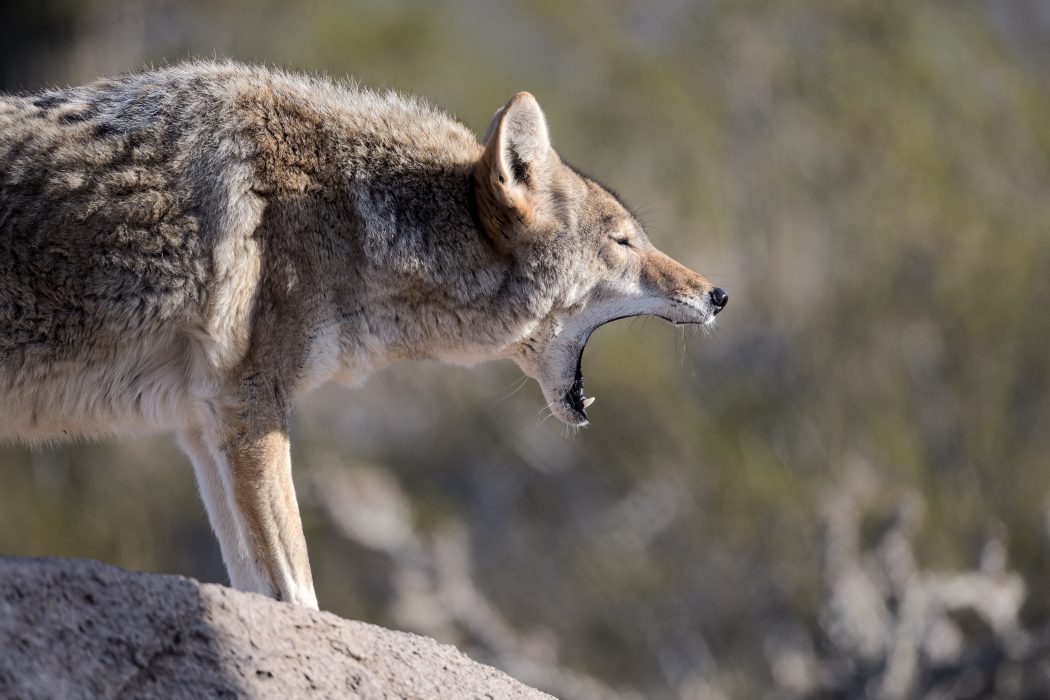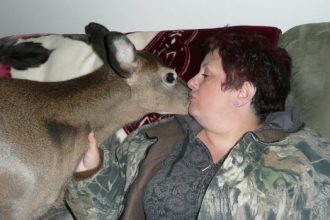No matter where you live, nature (and wildlife) are all around us. It’s a beautiful thing, and while this might be an exhilarating realization for animal lovers of all types, for owners of cats and dogs, it’s also bound to cause a bit of a scare. Wild predators pose a risk to your animal, but even less-threatening animals, like racoons, can also pose health risks to your pets, such as transmitting disease like rabies and distemper. If you live in the city, the odd cry of a hawk might have you worrying about your pet’s safety, but you should also be a little concerned about hearing someone rustling through your recycle bins late at night. Being closer to wildlife—outside of the city—you know that rustling in the recycle bin can be more than just a masked bandit.
Here are a few different preventative steps you can take to keep your animals safe from wildlife.
Keep Your Yard Clean
Animals of all types will find their way into your yard in search of food, and depending on the way your yard is fenced in, the risk may be greater from scenario to scenario. One way to discourage animals from entering your yard—or at least, keep them moving along—is to keep it free of edible debris like fruit and nuts from trees, dead plants, et cetera. Animals like coyotes and raccoons will eat just about anything, so be sure that you don’t have a buffet hiding under a snowbank before the season settles in.
Wood piles, compost piles, and thick bushes also make great hiding spots for animal to nestle; so just keep this in mind and keep your pets away from these areas. Remember to never leave your pet’s food outside – this is asking for animals to come for a visit.
Fence it in
If you live in an area where larger wildlife might be a threat—bears, coyotes, and the like—then investing in a good solid fence, 6 feet tall or higher, 10 if you can, is a good idea. Making sure that the fence is buried in the ground will keep animals from climbing in under the fence. According to ICWDM.org, a six foot tall buried fence should keep coyotes out. Another option if you’re dealing with skunks and similar animals is to install a “4 foot fence with 12 inches of the fence buried one inch below the ground surface, bent away from the property at a 90 degree angle.” This type of fence will stop the animal from digging underneath the fence to enter the property. Some might recommend repellents as a method for keeping wildlife out of your yard, but these are often harmful to the animal, the environment, and most often are not effective at keeping animals out.
Watch out for sick animals
One way to help prevent the spread of disease from wildlife to your animals is to help to contain disease. Keeping your pets protected and away from sick animals is the first step, but reporting sick or stray animals to local officials is also a helpful step to take. Stray cats might not seem like much of a concern, but if they are coming into contact with sick wildlife (i.e. raccoons) they might be spreading disease around your neighbourhood.
Strange behaviour (walking in circles, seeming confused), symptoms of sickness (poor breathing, runny nose, watery eyes, and conjunctivitis are all signs of canine distemper (which can be transmitted to other animals, including raccoons). Rabid animals will either act violent, or, if wild, timid, shy, and slow moving to the point where you might be able to get close to it.
There is no cure for rabies, so having your pets vaccinated and keeping them away from wildlife is the only step you can take to help protect them from the disease. If you’re in Toronto, Toronto Animal Services’ Chip Truck is a mobile service that will chip and vaccine your pet.
Leash your pets—always
If you have a large backyard — perhaps you’re lucky enough to overlook the ravine? — or if you don’t, but are prone to letting your pets run off leash in local wildlife parks and the like, you might want to think twice about the practice. Keeping your pets on their leash is ICWDM.org’s number two recommended strategy for keeping pets safe from animals (and traffic). The other alternative is keeping your pets indoors. Some people might think that this practice is cruel, but when it comes to animals like cats, this is a grave misconception. It’s actually the safest option.
If you do want to let your animals out, and you’ve got a sprawling yard to do so, invest in a long leash that keeps pets away from dangerous areas. If you like to take your pet off leash during walks, consider switching to a retractable leash, just to be safe.
Also on RNR:

























